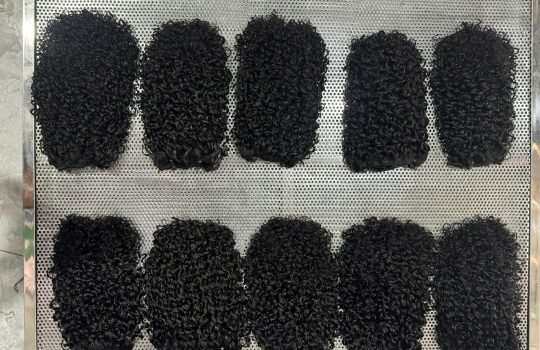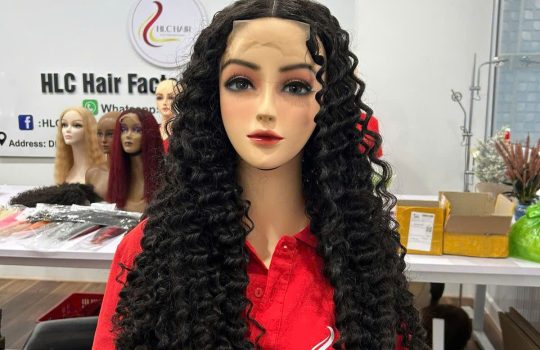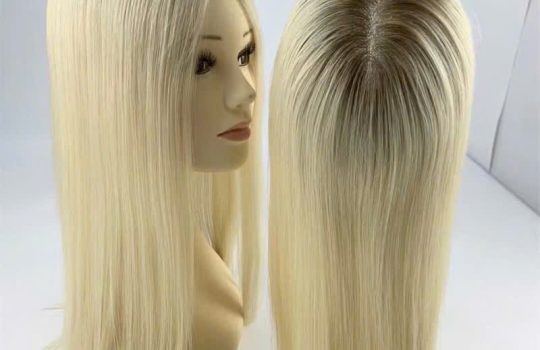When it comes to sourcing high-quality human hair extensions, two of the most popular types on the market are Indian hair and Vietnamese hair. Both are widely used in the beauty industry, and each has its own unique benefits.
If you’re a hairstylist, reseller, or salon owner wondering which hair type is best for your clients or business, this guide will help you understand the key differences and decide which one suits your needs.

1. Hair Origin & Collection Method
Indian Hair
Often collected from temples where women donate their hair for religious purposes (called “temple hair”).
Can also be sourced from comb waste or mixed donors, depending on the supplier.
May go through chemical processing to match textures and colors.
Vietnamese Hair
Ethically sourced from donors in rural areas of Vietnam.
Typically cut directly from a single donor, ensuring uniformity.
Usually comes in raw or virgin form—100% unprocessed.
Winner: Vietnamese hair for its ethical sourcing and donor consistency.
2. Texture & Appearance
Indian Hair
Naturally fine, silky, and lightweight.
Often slightly wavy or straight.
Blends well with naturally straight or wavy textures (especially for South Asian or Caucasian hair types).
Vietnamese Hair
Naturally thicker and stronger than Indian hair.
Smooth, with a soft and luxurious feel.
Comes in straight, wavy, or deep wave patterns.
Holds curls and styles longer due to its denser cuticle layer.
Winner: It depends on preference. Choose Indian hair for a fine, light feel, or Vietnamese hair for fullness and long-lasting styles.
3. Durability & Longevity
Indian Hair
Can last 6–12 months with proper care.
Often more prone to dryness or tangling if it’s been chemically processed.
Vietnamese Hair
Known for its durability—can last 1.5 to 3 years with good maintenance.
Cuticles are aligned and intact, reducing tangling and shedding.
Winner: Vietnamese hair, especially for clients wanting a longer investment.
4. Versatility for Styling
Indian Hair
Easy to style due to its light texture.
Takes well to curling and straightening but may not hold styles as long.
Vietnamese Hair
Can be dyed, bleached, curled, or straightened with excellent results.
Holds heat-styled looks for longer.
Ideal for clients who want bold, lasting styles (e.g., bone straight or body wave).
Winner: Vietnamese hair for styling performance.
5. Price Point
Indian Hair
Generally more affordable and widely available.
Good for entry-level or temporary use.
Vietnamese Hair
Slightly more expensive due to quality and sourcing.
Offers better long-term value for money.
Winner: Indian hair if budget is a concern. Vietnamese hair offers better ROI for serious users or businesses.
6. Common Uses
Indian Hair: Great for lightweight weaves, temporary installs, or budget-conscious clients.
Vietnamese Hair: Ideal for custom wigs, long-term wear, premium installations, and high-end salon services.
Final Verdict: Which One Should You Choose?
| Feature | Indian Hair | Vietnamese Hair |
|---|---|---|
| Texture | Light, fine, slightly wavy | Thick, soft, smooth |
| Durability | 6–12 months | 1.5–3 years |
| Styling | Easy, but styles don’t last | Great hold for curls, color |
| Price | More affordable | Higher, but better value |
| Ideal For | Budget clients, short-term | Long-term wear, premium clients |
Choose Indian Hair if:
✔ You want a lightweight, affordable option
✔ Your clients prefer a fine texture
✔ You’re looking for a temporary or entry-level product
Choose Vietnamese Hair if:
✔ You want long-lasting quality
✔ Your clients need premium hair for styling
✔ You plan to build a luxury hair brand or salon service
At HLC Hair Vietnam, we specialize in ethically sourced, 100% raw and virgin Vietnamese hair—renowned for its softness, strength, and longevity. We work with resellers, salons, and stylists worldwide to deliver unmatched hair quality and support.
📩 Still unsure which is right for you? Contact us today for a free consultation or sample pack!






